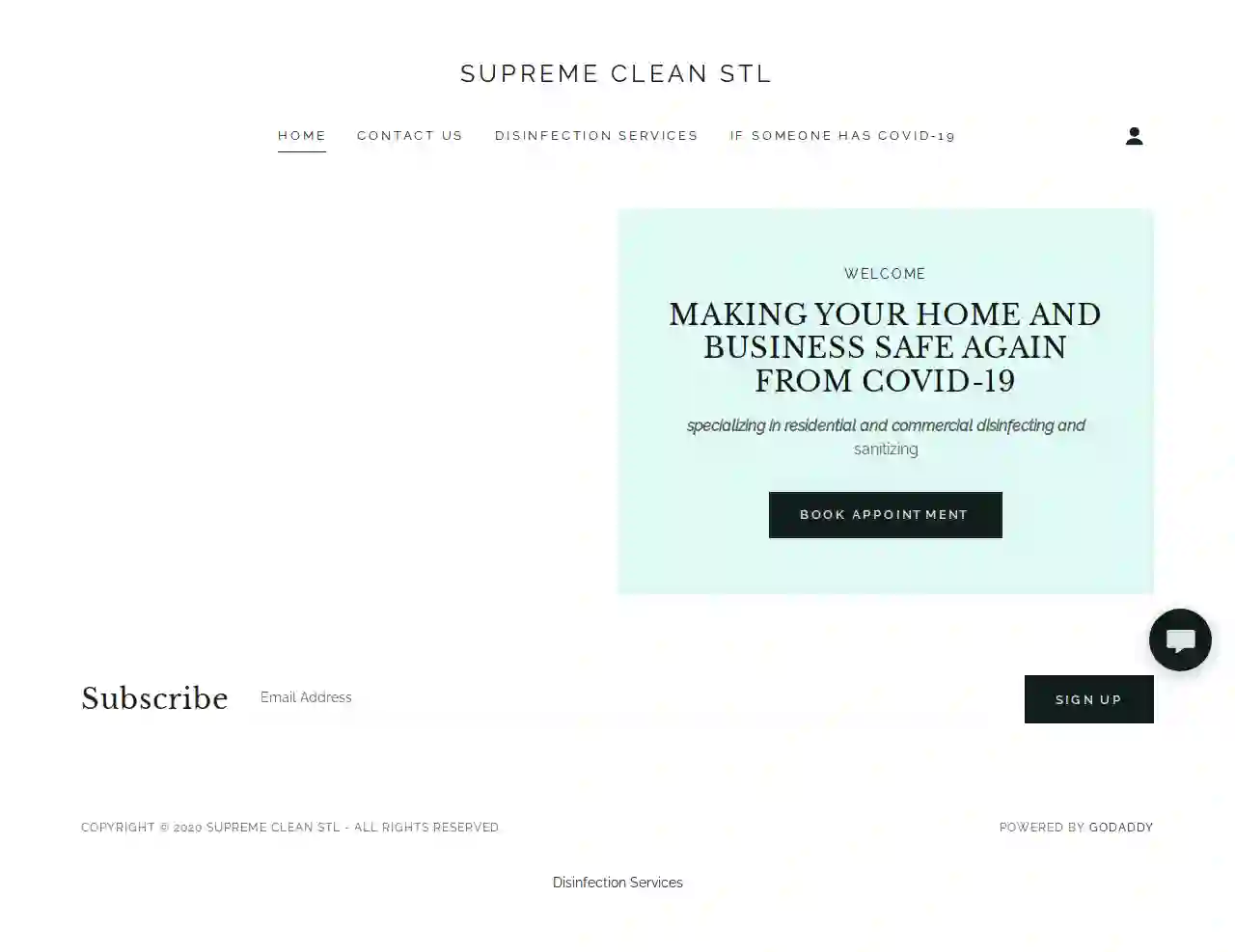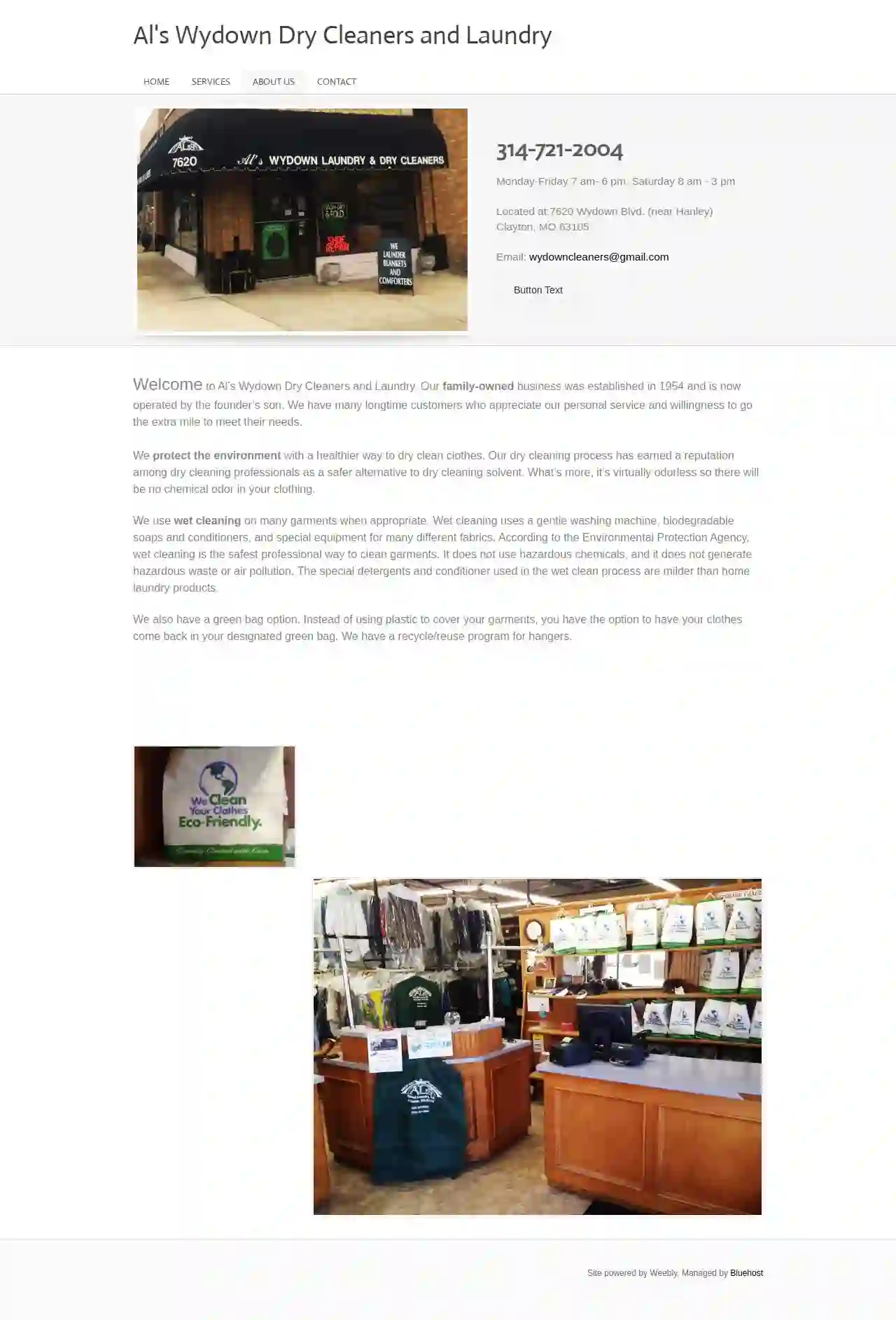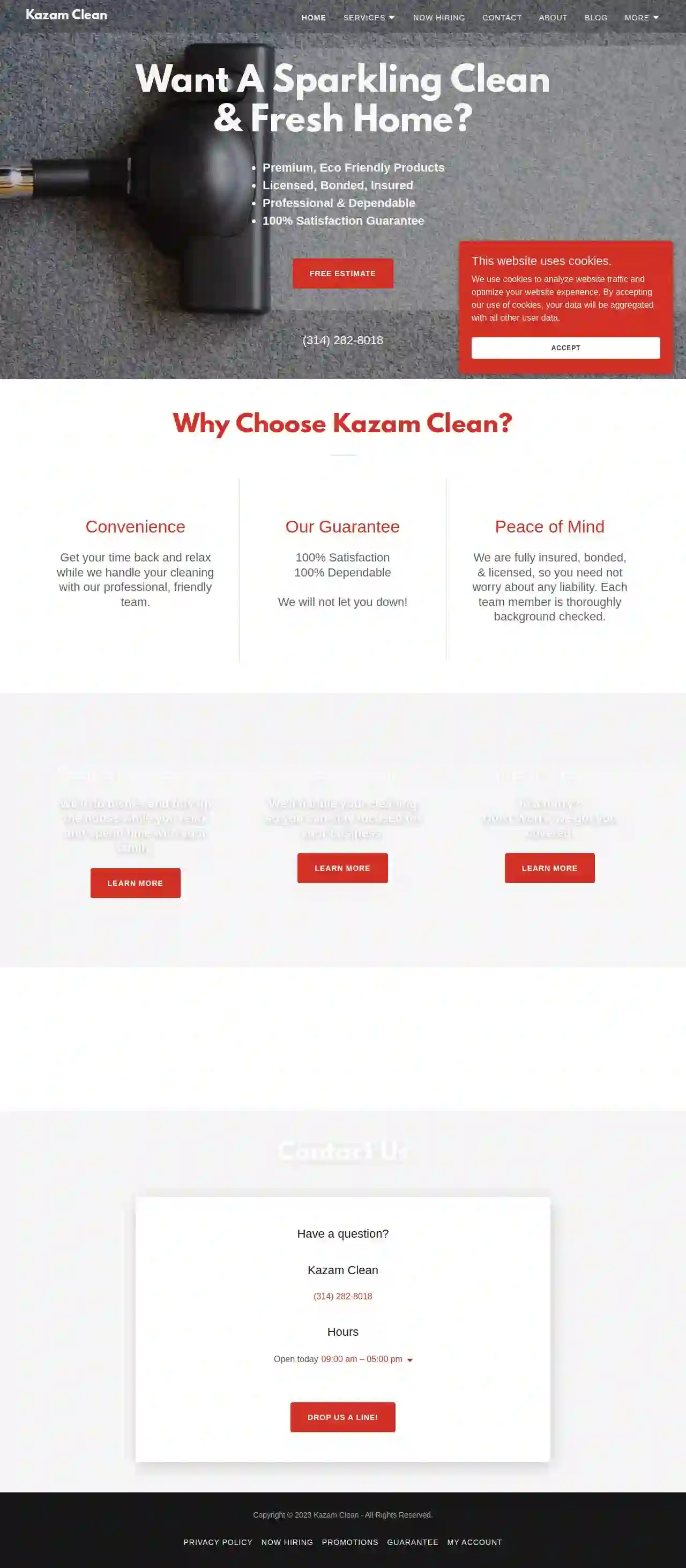Cleaning Services Warrenton
Find the best Residential Cleaning in Warrenton
Get multiple Housekeeping Services quotes for your project today! Compare profiles, reviews, accreditations, portfolio, etc... and choose the best offer.

St Louis Cleaning Team
523 reviewsSt. Louis, US- Services
- Why Us?
- Gallery
Get Quote
JC Home Cleaners
551 reviewsSt. Louis, US- Services
- Why Us?
- Gallery
Get Quote
SUPREME CLEAN STL
BRIDGETON, 117526 ST CHARLES ROCK ROAD, 63044, USMAKING YOUR HOME AND BUSINESS SAFE AGAIN FROM COVID-19. SUPREME CLEAN STL specializes in residential and commercial disinfecting and sanitizing. With years of experience and a commitment to providing top-notch services, we are dedicated to helping you create a safe and healthy environment for you and your loved ones.
- Services
- Why Us?
- Gallery
Get Quote
Maid Brigade of St. Louis
4.250 reviewsSt. Louis, US- Services
- Why Us?
- Gallery
Get Quote
The Clean-Tech Company
3.7161 reviews211 South Jefferson, Saint Louis, USAt Clean-Tech Company, we're dedicated to creating a positive impact on your business. With over 60 years of experience, we provide customized solutions for commercial, medical, educational, and industrial facilities. Our team becomes a seamless extension of yours, ensuring quality assurance and a commitment to green cleaning. We believe in cleaning with a conscience, using environmentally certified products and sustainable methods to reduce exposure to chemicals and improve air quality. Our mission is to create safe environments that enrich lives and facilitate success.
- Services
- Why Us?
- Gallery
Get Quote
Two Ladies & A Bucket
4.6178 reviewsSt. Louis, USCreating Free Time for Busy People. Two Ladies & A Bucket provides professional house cleaning services throughout St. Louis, MO and nearby communities. Call (314) 229-1736. Online Estimates. Cleaning Services Trusted in St. Louis Since 2005. A clean home is a healthy home. In less time and without the headaches, you can have an experienced cleaning team regularly clean your home. You want a home that ensures your family health is not impacted by hidden dust, mold or germs. Making this happen requires consistency, the right tools and products, the time, energy and a plan to make sure all the visible and hidden parts of your house are clean. An understandably difficult job. The Two Ladies & a Bucket team, come into your home professionally, prepared and with purpose. We provide an impeccable level of cleaning with consistency, so that your house remains to be a healthy and welcome environment for family and friends. Your cleaning tasks are tackled from the front of your house to the nooks and crannies, by our on-time team of professionals trained to locate and remove dirt and germs from all locations in your home. We Are Super Pet-Friendly! We have a 100% FREE up your time guarantee! If you’re not completely satisfied, we’ll come back within 48 hours to make things right! Yes, We’re Pet-Friendly! Your Personal Cleaning Team Two Ladies & A Bucket home cleaning services is based out of St. Louis Missouri. Our continued success is because of our loyal customers who enjoy our attention to detail, and courteous service, and refer us to their friends and neighbors. New customers will be hooked once they experience our staff’s professional attitude and they’re spotless home! We are a fully bonded and insured cleaning company, serving the St. Louis Metro area, including the counties of St. Charles and Jefferson County. Call or contact us if you have any questions about our service area. We will provide you with the details of the services we provide or schedule a complimentary evaluation of your home and it’s unique requirements. We love referrals. Referrals are the highest compliment we can receive from our clients. We appreciate your trust and confidence in our services. If our current client refers a new recurring client to us, then our current client receives a FREE cleaning! If the new client that was referred is a one-time cleaning the current client will receive $25.00 off their next cleaning fee. Referral Program 5-Star Cleaning Services. For immediate service, please call: (314) 229-1736. Our office hours are Monday – Friday, 8:00 am – 5:00 pm. Instant Online Estimates. Proudly serving St. Louis, MO and nearby communities: Affton, Antonia, Arnold, Ballwin, Barnhart, Benton Park, Brentwood, Central West End, Chesterfield, Clayton, Columbia, IL, Crestwood, Creve Coeur, Des Peres, Ellisville, Eureka, Fenton, Frontenac, Glendale, Green Park, High Ridge, House Springs, Imperial, Jefferson County (parts), Kirkwood, Ladue, Lemay, Manchester, Maplewood, Maryland Heights, Mehville, Oakland, Oakville, Olivette, Richmond Heights, Rock Hill, Soulard, South City, South County, South Hampton, St. Louis, Sunset Hills, The Hill, Tower Grove, Town & Country, University City, Valley Park, Waterloo, IL, Webster Groves, West County, Wildwood.
- Services
- Why Us?
- Our Team
- Gallery
Get Quote
Corvus Janitorial Systems
4.638 reviewsSt. Louis, US- Services
- Why Us?
- Gallery
Get Quote
Al's Wydown Laundry & Cleaners
4.721 reviewsSt. Louis, US- Services
- Why Us?
- Gallery
Get Quote
Kazam Clean, LLC
4.88 reviews123 Clean St, St Louis, MO, St. Louis, 63101, USKazam Clean is a maid service company currently servicing the St Louis, MO area, focused on rendering exceptional cleaning and customer service to our clients. Our mission is to become the most trusted, respected, and reliable cleaning company in St Louis. We are committed to providing the highest quality maid cleaning service available by exceeding the expectations of our clients through continuous improvements in Quality, Services, and Productivity. Our core values include Integrity, Reliability, Caring, Excellence, and Innovation. We aim to deliver the best quality experience with regards to our cleaning and our customer service.
- Services
- Why Us?
- Accreditations
- Our Team
- Testimonials
Get Quote
SERVPRO of Oakville/Mehlville
4.960 reviewsSt. Louis, US- Services
- Why Us?
- Gallery
Get Quote
Over 60,241+ Janitorial Businesses onboarded
Our janitorial services operate in Warrenton & surroundings!
CleaningMatch has curated and vetted the Best Cleaning Businesses arround Warrenton. Find a top & reliable pro today.
Frequently Asked Questions About Cleaning Services
- Clean Pet Bedding: Wash pet bedding regularly in hot water to remove odors and bacteria.
- Vacuum Thoroughly: Vacuum carpets, rugs, and upholstery frequently using a vacuum cleaner with a pet hair attachment.
- Enzyme Cleaners: Use enzyme cleaners specifically designed for pet odors. These cleaners break down the odor-causing molecules.
- Baking Soda: Sprinkle baking soda on carpets and upholstery, let it sit for a few hours, then vacuum. Baking soda absorbs odors.
- Air Fresheners: Use air fresheners or diffusers to mask odors temporarily.
- Professional Cleaning: For persistent odors, consider hiring a professional cleaning service specializing in pet odor removal.
- Cleaning: Removing dirt, dust, and debris from surfaces using soap or detergent and water. It improves the appearance and removes visible contaminants.
- Sanitizing: Reducing the number of bacteria on surfaces to a safe level. It uses chemical disinfectants or heat to kill or inactivate bacteria.
- Disinfecting: Killing or inactivating most disease-causing microorganisms on surfaces. It uses stronger chemical disinfectants than sanitizing and targets a wider range of pathogens.
- Experience and a proven track record: Choose companies with a solid history of providing quality cleaning services.
- Positive customer reviews and testimonials: Check online reviews and ratings to gauge customer satisfaction.
- Licensed and insured professionals: Ensure the company has the necessary licenses and insurance to protect you from liability.
- Clear and transparent pricing: Obtain detailed quotes and compare prices from multiple companies.
- Good communication and responsiveness: Choose a company that communicates clearly, responds promptly, and addresses your concerns.
- Ventilation: Improve ventilation by opening windows, turning on the exhaust fan, and using a dehumidifier to reduce moisture levels.
- Bleach Solution: Mix one cup of bleach with one gallon of water. Wear gloves and eye protection when handling bleach. Apply the solution to the affected area, let it sit for 10-15 minutes, then scrub with a brush and rinse thoroughly.
- Vinegar Solution: For a milder alternative, mix equal parts water and vinegar. Apply to the moldy area, let it sit for an hour, then scrub and rinse.
- Baking Soda Paste: Make a paste of baking soda and water, apply to the moldy area, let it dry, then scrub and rinse. Baking soda helps remove stains and deodorize.
- Commercial Mold and Mildew Remover: Use a commercial mold and mildew remover according to the product instructions.
How do I get rid of pet odors in my home?
Regular cleaning, enzyme cleaners, and baking soda are effective methods for eliminating pet odors and maintaining a fresh-smelling home.
What is the difference between cleaning, sanitizing, and disinfecting?
Cleaning is usually the first step, followed by sanitizing or disinfecting depending on the level of hygiene required.
How do I find a good cleaning service?
Utilize online directories like CleaningMatch to find and compare qualified cleaning services in your area.
How do I remove mold and mildew from my bathroom?
Always test any cleaning solution on a small, inconspicuous area first. After cleaning, take steps to prevent future mold growth by addressing moisture issues, such as fixing leaks and improving ventilation.
How do I get rid of pet odors in my home?
- Clean Pet Bedding: Wash pet bedding regularly in hot water to remove odors and bacteria.
- Vacuum Thoroughly: Vacuum carpets, rugs, and upholstery frequently using a vacuum cleaner with a pet hair attachment.
- Enzyme Cleaners: Use enzyme cleaners specifically designed for pet odors. These cleaners break down the odor-causing molecules.
- Baking Soda: Sprinkle baking soda on carpets and upholstery, let it sit for a few hours, then vacuum. Baking soda absorbs odors.
- Air Fresheners: Use air fresheners or diffusers to mask odors temporarily.
- Professional Cleaning: For persistent odors, consider hiring a professional cleaning service specializing in pet odor removal.
Regular cleaning, enzyme cleaners, and baking soda are effective methods for eliminating pet odors and maintaining a fresh-smelling home.
What is the difference between cleaning, sanitizing, and disinfecting?
- Cleaning: Removing dirt, dust, and debris from surfaces using soap or detergent and water. It improves the appearance and removes visible contaminants.
- Sanitizing: Reducing the number of bacteria on surfaces to a safe level. It uses chemical disinfectants or heat to kill or inactivate bacteria.
- Disinfecting: Killing or inactivating most disease-causing microorganisms on surfaces. It uses stronger chemical disinfectants than sanitizing and targets a wider range of pathogens.
Cleaning is usually the first step, followed by sanitizing or disinfecting depending on the level of hygiene required.
How do I find a good cleaning service?
- Experience and a proven track record: Choose companies with a solid history of providing quality cleaning services.
- Positive customer reviews and testimonials: Check online reviews and ratings to gauge customer satisfaction.
- Licensed and insured professionals: Ensure the company has the necessary licenses and insurance to protect you from liability.
- Clear and transparent pricing: Obtain detailed quotes and compare prices from multiple companies.
- Good communication and responsiveness: Choose a company that communicates clearly, responds promptly, and addresses your concerns.
Utilize online directories like CleaningMatch to find and compare qualified cleaning services in your area.
How do I remove mold and mildew from my bathroom?
- Ventilation: Improve ventilation by opening windows, turning on the exhaust fan, and using a dehumidifier to reduce moisture levels.
- Bleach Solution: Mix one cup of bleach with one gallon of water. Wear gloves and eye protection when handling bleach. Apply the solution to the affected area, let it sit for 10-15 minutes, then scrub with a brush and rinse thoroughly.
- Vinegar Solution: For a milder alternative, mix equal parts water and vinegar. Apply to the moldy area, let it sit for an hour, then scrub and rinse.
- Baking Soda Paste: Make a paste of baking soda and water, apply to the moldy area, let it dry, then scrub and rinse. Baking soda helps remove stains and deodorize.
- Commercial Mold and Mildew Remover: Use a commercial mold and mildew remover according to the product instructions.
Always test any cleaning solution on a small, inconspicuous area first. After cleaning, take steps to prevent future mold growth by addressing moisture issues, such as fixing leaks and improving ventilation.